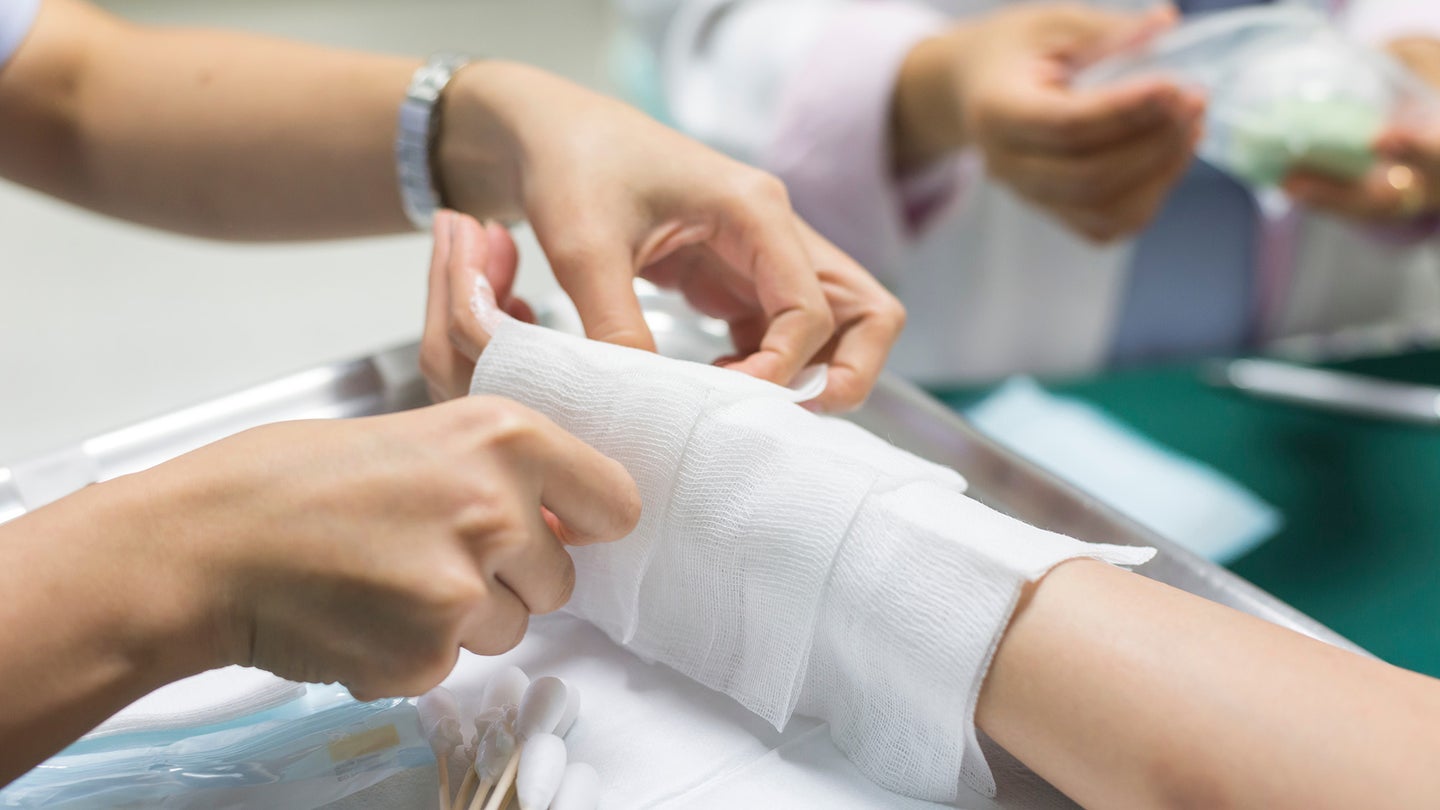How to Treat Burns

Adobe Stock / bhakpong
If you’re outside, you’re likely in danger of being burned. You could fall asleep in the sun, or simply spend too long out in the field. You could not be paying attention around the campfire—or while cooking with one. Anyone who’s ever accidentally grabbed a hot cast iron skillet will likely never make the same mistake twice. That’s to say nothing about the dangers of a hot casing or barrel—not to mention, and heaven forbid, the accidental misfire of a gun. Burns primarily occur in the home or the workplace, according to the World Health Organization. Your kitchen or garage are where you might also encounter some of the most severe forms of burns, which are caused by electricity mishaps and chemical contact. Regardless of how much time you spend outdoors, it’s important you know how to treat burns.
So what should you do when the burn comes for you? First of all, relax. These things happen. Just make sure to read on for information on what causes burns, how to treat them yourself, and when to seek the advice of a doctor or other medical professional.
Table of Contents
What Causes Burns?
How to Treat a Minor Burn
When to Seek More Intense Care
What Are Burns?
Basically, burns are tissue damage caused by heat, electricity, chemicals, sunlight, or radiation. These injuries all vary in severity but can typically be judged on a six-degree scale. The first kinds of burns, which are said to be first-degree, only damage the epidermis. Second-degree burns go deeper and affect the dermis, as well. This is the kind of burn that may require a graft—a temporary and artificial cover—to help the injury heal, and may result in scarring. Third-degree burns are extremely serious and either damage or completely destroy hair follicles, sweat glands, and tissues in addition to both the epidermis and the dermis. These always require skin grafts.
Much less common are fourth-, fifth-, and sixth-degree burns. They refer to damage from any of the aforementioned elements that extends to fat, muscle, and bone, respectively.
More severe burns affect much more than the epidermis and the layers below it. They can trigger the body’s inflammatory response, which typically protects the body from foreign bodies like bacteria, viruses, and toxins. The burns can cause this system to go haywire and harm the heart, lungs, kidneys, and more.
This inflammatory response produces what is, in essence, shock. Fluid loss leads to a massive drop in blood pressure, and sometimes something called edema, which refers to when fluids are trapped inside the body, causing swelling. This fluid, whether lost or trapped, is what can lead to fatal organ failure.
In all, burns cause an estimated 180,000 deaths per year.
How to Treat a Minor Burn
Obviously, the first thing to do is to remove yourself from the source of the burn. That might mean walking inside, dousing your skin with water for 20 minutes, or removing jewelry that’s gotten too hot. Or, it could mean deploying the classic advice you learned in elementary school: stop, drop, and roll. Make sure not to try and rip and clothing that may have melted onto the burn. Raise the afflicted area to reduce swelling, and if needed, take an over-the-counter drug like ibuprofen or paracetamol.
Just be careful to not go too far in the opposite direction while completing the first step. Make sure to put on a blanket after you’ve doused yourself or someone else in cold water. It’s unlikely you’ll need it, but here’s our guide to treating hypothermia, just in case. Never cover a burn victim in ice, as that could deepen the injury.
When the burn is healing, just make sure to cover it with petroleum jelly two or three times per day. And, resist the natural urge to pop whatever blisters form. They serve as the body’s natural mechanism of protecting against infection.
When to Seek More Intensive Care
If the burn is bigger than not only the thumb, but also the rest of the hand, it may be time to go to the hospital. Same goes for if your skin has turned white, or if you seem to be exhibiting signs of shock, as mentioned above.
Before you head out you should put cling film—aka Saran wrap—over the burn. Just don’t do what the name suggests and actually wrap it. Just laying it, or even a clear plastic bag, over the afflicted area will do the trick. Just make sure not to leave it there for more than a few hours. The idea is to make it so that the wound can be examined. Contrary to popular belief, using butter, paste, or cream won’t help the wound heal or cool, and can actually be counterproductive for the professional who ends up checking it out.
The post How to Treat Burns appeared first on Field & Stream.
Articles may contain affiliate links which enable us to share in the revenue of any purchases made.
